#Maratha Empire
Text


early morning reading on 16th century maratha empire
#bookblr#studyblr#desiblr#indian academia#indian literature#dark academia#indian history#light academia#books#honey lemon#notes#digital notes#book blog#study blog#studyspo#maratha empire
2K notes
·
View notes
Text
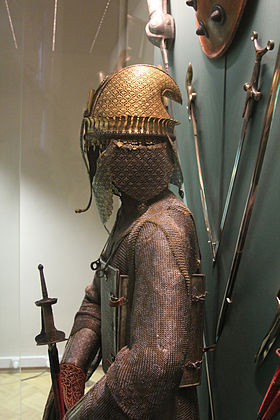

17th/mid 18th century Maratha Empire Armour and Signature Maratha Empire helmet with curved back.
i just think this is very aesthetically pleasing and a really good design, would love to draw something based on this one day
33 notes
·
View notes
Text
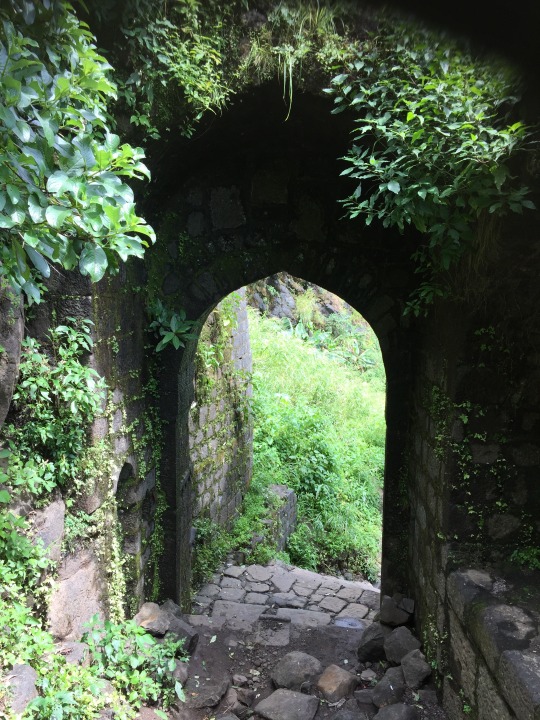
sinhagad fort - maharashtra, india
#mine#doorways#ruins#cottagecore#maharashtra#india#indian architecture#fort#pune#hill fort#maratha#maratha empire#magical
77 notes
·
View notes
Photo

vishwajeetsalunkhe_photography
The Raigad Fort: Massive Fort 1,356 m Above Sea Level
Situated in the Raigad district of Maharashtra, India, the Raigad Fort (meaning Royal Fort) once was the capital of the Maratha Empire. Construction of several structures on the fort took place after Chhatrapati Shivaji made it his capital in 1662. There were about 300 stone houses, mansions, palaces garrisons, and a market which was a mile long on the fort. The fort also had decorative gardens, pillars, pathways, and water reservoirs.
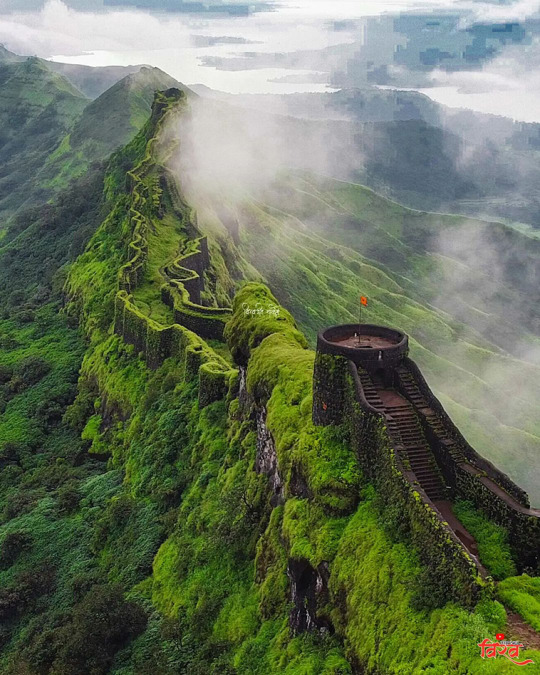
vishwajeetsalunkhe_photography
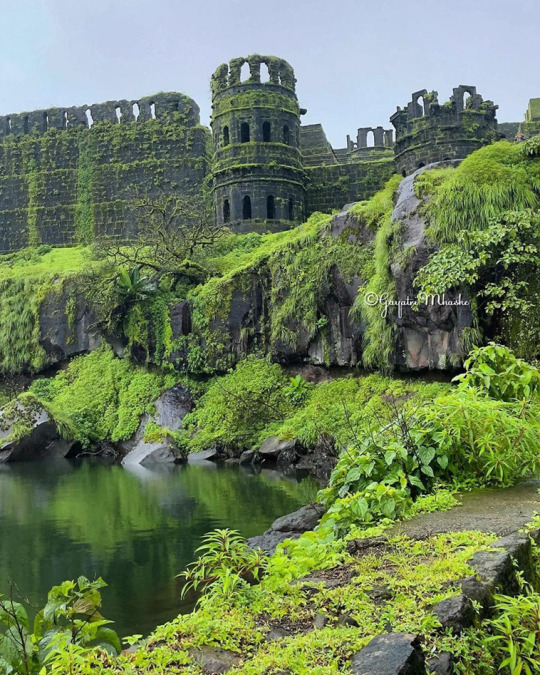
imgayatrimantra
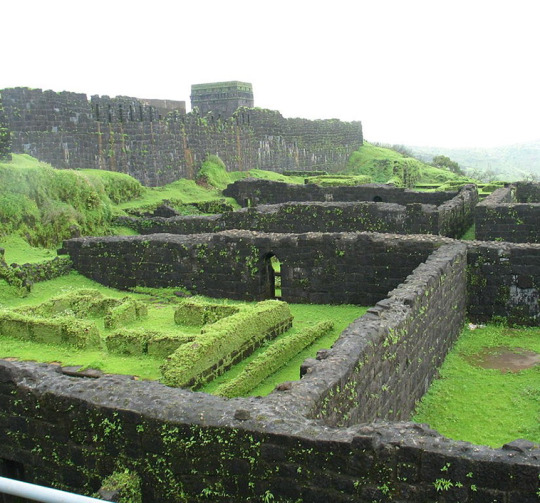
en.wikipedia.org
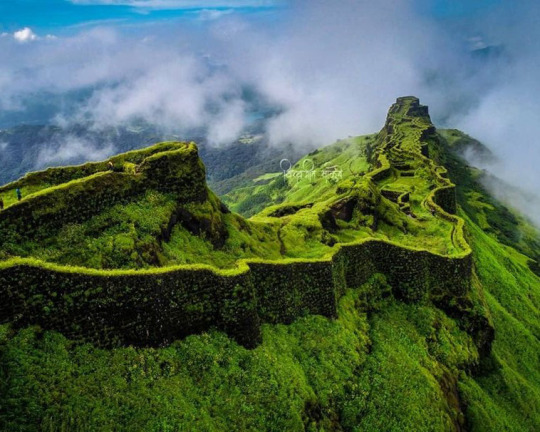
vishwajeetsalunkhe_photography
#vishwageetsalunkhe_ photography#photographer#raigad fort#fort#raigad district#maharashtra#india#royal fort#maratha empire#architecture#history#chhatrapati shivaji#imgayatrimantra#en.wikipedia.org
7 notes
·
View notes
Text
Countries that are no more: Sikh Empire (1799-1849)
Though short lived, this empire was notable for a few reasons. First, it was the last major bastion of native rule on the Indian Subcontinent before a century of unchecked British rule which had already been gradually expanding over the preceding century. Secondly, it was diverse & tolerant in its ethnic and religious composition, not just in the general populace but more uniquely in its administration. Finally, it was notable for the religion of its leaders, perhaps the only time in history where Sikhs reigned atop an empire. This is the Sikh Empire.
Name: In English, the empire is known as the Sikh Empire. In Persian this was translated as Sarkār-i-Khālsa or the Khālasā Rāj in Punjabi. These languages were important administratively within the empire. Essentially to mean empire or kingdom of the Sikhs. Khalsa is a Punjabi term for the Sikh community more broadly and specifically means "pure" as in one professes to follow the Sikh faith and has undergone the Amrit ritual ceremony of initiation, specifically baptism.
Language: The Sikh Empire was notable for its many languages. Persian was its administrative language at court. Persian had been the language of diplomacy, administrative and the high arts from the Middle East to the Indian Subcontinent for centuries in part due to the spread of Islam to India. It was the court language of the greatest Islamic polity in the history of India, the Mughal Empire (1526-1857). Other languages which in the empire included Indo-Aryan languages such as Punjabi which was the dynastic native tongue of the ruling family and various Punjabi dialects which made up the lingua franca of the core territory of the empire. Kashmiri and Dogri were spoken in some parts as well, also Pashto (Pashtun) also known as Afghani. There were numerous others which also took place in its territory in modern India, Pakistan and Afghanistan.
Territory: At its peak, the empire held roughly 200,000 sq miles of territory. The territory was centered in the Punjab region of modern Northwestern India and Eastern Pakistan. It covered territory in the modern states of India, Pakistan, the Afghanistan & Pakistan border and even small parts of Western Tibet in modern China.
Symbols & Mottos: The motto of the empire was ਅਕਾਲ ਸਹਾਇ
Akāl Sahāi which is Punjabi for "With God's Grace" and its anthem was ਦੇਗ ਤੇਗ ਫ਼ਤਿਹ Dēġ Tēġ Fatih Punjabi for "Victory to Charity and Arms." The also used a triangled flag called the Nishan Sahib. This flag was used by Sikhs prior to the 1799 establishment of the empire and continued to have use after its 1849 disestablishment. It is usually depicted as an orange inner field with a green outer field with golden trim and patterns both on the green outer field and orange inner field. There were also individual flags for various Sikh, Hindu and Muslim regiments within the army as well. The Muslim ones often sharing similarity with the modern Pakistan flag.
Religion: Sikhism was the dynastic religion and religion of roughly 6-12 percent of the overall population. 50-80 percent of the populace was Muslim and 10-40 percent Hindu. There were also smaller populations of Christians and Jews as well. Religious tolerance was practiced as a matter of policy throughout the empire. Sikhs certainly benefitted from a ruling dynasty that was of their community however with larger populations of Muslims and Hindus among their territory, policies of accommodation and tolerance were practiced to other faiths as well. Likewise Indian and European Christians could practice their faith and rise to important military and government positions and even some Jews featured in the military as well. Promotion within the military and government more broadly had less to do with religion, ethnicity or geographic origin than with merit and personal loyalty.
Currency: The currency of the empire was called Nanak Shahi Sikee, these were metal coins usually of silver composition.
Population: The population was estimated to be roughly 12 million people at its peak in in the late 1830s and early 1840s.
Government: The government could be characterized as a federal monarchy with a later adoption of elements of absolute monarchy. Its origins lie in the Sikh community which started in the Punjab region of the Indian Subcontinent. This region consists of modern Pakistan (mostly) and some of India (remaining portion). It spans the five major rivers west to east (Indus, Jhelum, Chenab, Ravi & Sutlej). Sikhism had its origins and greatest core in the Punjab region among Punjabis. Though it is a relatively young religion by comparison to Hinduism and Islam, elements of overlap and interaction with both of these older faiths have influenced it. Nonetheless, Sikhs faced alternating periods of tolerance and persecution throughout the Mughal Empire and many Sikhs hid in jungles near the Himalayan foothills as refuge from the Muslim Mughals and various local Hindu hill tribal chiefs who persecuted them.
In response to this persecution from their neighbors, Sikhs formed militias to protect their religion community, these militias were called jathas and in turn these formed into a larger Dal Khalsa (Sikh army) circa 1735-1738. in 1748 at Amritsar, India, the most holy city for Sikhs in 1748 these militias were reorganized into a misl which is an Arabic term for equal. These misls became known as the Sikh Confederacy or Misl period (1748-1799). There were twelve sovereign Sikh misls formed and later a Muslim ruled misl which created a federation or confederacy united by Sikhism to preserve and protect their religious faith. There was uneven strength between the misls and some tried to expand at the expense of others, but they still formed a common defense of their community and even held biannual legislative meetings in Amritsar to address matters of the community.
The Mughal Empire suffered major decline in the 18th century following the death of its emperor Aurangzeb in 1707. The combination of a ruined economy from expensive wars, decentralization of power and the expanse of the Hindu oriented Maratha Empire (1674-1818) from the Western Deccan Plateau all contributed to its decline and creation of a power vacuum in parts of India, including the Punjab. To make matters worse, Nader Shah, the Shah of Persia invaded the Mughal Empire in 1739 and sacked the Mughal capital at Delhi. The plundering of riches from the Mughal capital was so great that Persia experienced three years exempt from all internal taxes. In this context the already persecuted Sikhs sought greater mutual defense, though their political autonomy remained relative to their respective misl. Despite the occasion inter-fighting with each other. Other problems came from the Afghan Durrani Empire which grew in the wake of Nader Shah's passing in Iran. The Durrani Empire would expand into Northern India including the Punjab and make the Mughals their vassals especially after defeating the Maratha Empire in 1761 at the Third Battle of Panipat. The Afghans would battle the Sikh Misls many times which aimed to defend themselves in the power vacuum from the Mughal decline.
The founder of the Sikh Empire proper, who united all the thirteen misls was a man named Ranjit Singh (1780-1839) who was of Jat-Punjabi ethnic origin and specifically Jat Sikh ethnoreligious families. His father Maja Singh and grandfather Charat Singh were the founders and chiefs of the Sukerchakia Misl. Ranjit was afflicted with smallpox as a child and left him blind in his left eye and scarred on his body, features which were noted by observers from Europe later in life.
Ranjit's father died when he was 12 and he took over chiefdom of the Sukerchakia Misl which was among the five most power Sikh misls. Through marriage Ranjit had alliances with two of the other top five misls. The Kasur misl near the major city and traditional capital of the Punjab of Lahore was controlled by a Muslim who assisted the Afghans in their invasions of India. Ranjit Singh defeated an Afghan invasion in 1797 in battle. In 1798 another Afghan army was checked by Ranjit Singh through scorched earth tactics.
in 1799 Ranjit Singh took Lahore using a combined 50,000 strong army made from his misl and that of his mother-in-law. This was traditionally dated as the founding of the Sikh Empire as Lahore would serve as its capital but Ranjit Singh would be formally vested as the Maharaja (King) of the Punjab in 1801.
Ranjit Singh held many titles, but the principal ones were Maharaja of the Punjab and Sarkar Khalsaji (Head of the Khalsa) which showed his titular leader status over the Sikh army and other misls. His authority was both geographic in nature and communal-religious in nature (to a degree).
Ranjit Singh would rule and expand the Sikh Empire until his death in 1839. The empire would survive roughly a decade after his demise.
Ranjit Singh was tolerant towards background in his governance and believed in merit and loyalty above all else. He hired Sikhs, Muslims, Hindus and Christians into his military and civil administration. These could also be Indians and Europeans with some French, Italian, Spanish, Russian & German officers taking leadership within his military. Even a few American adventurers such as Josiah Harlan and Alexander Gardner found work within Ranjit Singh's empire. The former Harlan (born to Quakers in Pennsylvania) taking on a governorship and the latter Gardner who was said to be born to a Scottish or Irish (possibly Scots-Irish) fur trader in modern day Wisconsin and had travelled to Central Asia dressed in a turban decked in Scottish tartan pattern joined the Sikh Empire's military where he served as a colonel and commanded the artillery. Ranjit refrained from hiring British officers joining his ranks but still communicated with the British East India Company which was Britain's state sponsored corporation bent on controlling India for its geostrategic and economic benefits. He relented slightly after 1835 and hired some British into his ranks.
Ranjit was secular and tolerant in his rule overall but personally followed Sikhism, he restored Sikh Gurdwaras (temples) and also prayed with Hindus in their own temples and upheld the Hindu sacred protection of cows and prevented their slaughter under punishment by death. Likewise, he had standing orders that his army was never to loot or molest civilians especially when conquering new territory and to not destroy houses of worship. All discipline was to be strictly enforced under his order. Observers noted that Ranjit would increase the salary of those who didn't engage in corruption and slice the nose off of those who were said to misbehave or act corruptly in his administration of state affairs. The mutilation was not only physical discipline but a psychological scar to deter bad behavior and forever mark one as untrustworthy.
The above is the consensus of most accounts, there are some Muslim accounts from the mid-19th century which portray Ranjit's reign as despotic and biased towards Kashmiri Muslims. The overall picture is one of a complex individual but generally agreed upon to be tough and strict at times but also overall pragmatic and not willing to let religious or national background create a personal bias towards their utilization in his administration.
After Ranjit's death the rules of succession weren't clearly established and in quick succession his son, grandson and subsequently two other sons ruled in his wake with his son Duleep Singh reigning the longest from 1843-1849. Duleep would later live in exile in Europe following defeat his by the British.
Military: The Sikh Khalsa Army at its peak in 1839 was roughly 125,000 men strong and it had infantry, cavalry and artillery components. Its origins lied in the Sikh jathas of the late 17th and early 18th centuries which passed onto the Sikh Misl (Confederacy) period of the later 18th century. These were typically cavalry based and engaged in hit and run tactics against the Mughals, Maratha and Afghans. Later Ranjit would modernize the Sikh army along European principles utilizing European and American recruited officers and by purchasing and developing modern weapons.
The military were given performance standards for logistics of troop deployment, maneuver and marksmanship. Likewise, the army was divided into three segments of elite troops, regulars and irregulars. Each with its own infantry, cavalry and artillery component. Even European style medals and awards for merit could be issued, including the Order of Merit with Ranjit's portrait featured on the medal.
Ultimately, the empire's military was a synthesis of modern (19th century) Western organization, discipline and technology with the original Indian cavalry hit and tactics and methods of its Sikh jatha forebearers.
Its infantry composition was not just Western officers and Sikhs of the Punjab for originally Sikhs looked down upon the infantry and so Afghans, Dogras and Nepali Gurkhas among others filled the infantry ranks. In time Punjabi Sikhs joined its ranks too. It reached over 50,000 in strength.
The cavalry reached a strength of 10,000 strong and consisted of Sikhs mainly, given their traditional use of cavalry dating back to jatha and misl eras preceding the 19th century.
The artillery was made up of 5,000 gunners at its peak with heavy cannons pulled by elephants, medium cannon pulled by oxen, light cannon pulled by horses and some mixed guns pulled by camels.
The traditional enemies of the empire in war consisted of the Afghans who presented its greatest threat from the West, the Sikhs pushed the Afghans from the Punjab and pressed into Afghanistan itself before being checked at the border, this demarcated the empire's western limit.
Other enemies included the Kingdom of Nepal which the Sikhs defeated. The Sikh Empire and its vassal the Dogra Rajput also fought against the Chinese Qing Empire and its vassal Tibet which resulted into a military stalemate but saw brief occupation of parts of Western Tibet in the early 1840s.
Its terminal enemy was the British East India Company which would face and defeat the Sikh Empire in two wars (1845-1846 and 1848-1849). The second war would lead to the British annexation of the Punjab and formal cessation of the Sikh Empire.
Lifespan: The empire's origins date back to the 18th century formation of the Sikh Misls within the Punjab and its gradual union under Ranjit Singh. Formally dated to start his 1799 capture of Lahore. In 1801 Ranjit was formally coronated as Maharaja of the Punjab.
Over the next several decades the empire would expand in several directions with the gradual defeat of the Afghans and Marathas who warred in the vicinity of the Punjab.
1809 saw Ranjit Singh sign a treaty of friendship with the British East India Company (EIC). This treaty requested Sikh help against the French should they attack EIC possessions elsewhere in India. Also, the Sikhs were not to pursue conquest south of the Sutlej River which acted as a border between Sikh and British spheres of influence. In reality this bought Ranjit time to focus on expanding against the Afghans in Punjab and Kashmir.
The empire expanded well into the fall reaches beyond Kashmir and Jammu and gained vassals in the Ladakh region. Likewise, the Sikhs would go onto fight the Nepalese (Gurkhas) and check their advance towards Kashmir.
The empire's lifespan very much mirrored with its founder Ranjit Singh's. Ranjit Singh had unified the Sikh Misls of the Punjab through alliance and conquest, and he driven out the Afghan invaders and expanded the Sikh polity he created to vast territories with tributary states of its own. He also gained riches from conquest, meritorious tax collections and trade agreements. Financed religious temple constructions of various faiths and modernized the military. Yet while his empire was on the surface strong, it was to peak with his demise in 1839. His health had declined in the 1830s due to a stroke and alcoholism as noted by many observers. He was said to treat his chronic pain with alcohol and opium though conversely, he refused to eat beef or smoke and was somewhat health conscious. Ultimately it was said he died of a combination of stroke and his failing liver due to his excessive alcohol consumption. He was cremated and four of his Hindu wives are said to have committed sati (ritualistic devotional suicide of widows by casting oneself onto the husband's burning funeral pyre) in a final act of martial devotion to their departed spouse.
In Ranjit Singh's wake, his sons and grandsons found themselves competing for succession, their were deep internal divisions and who to support and in quick order a son, grandson and two more sons of Ranjit took control with the youngest son Duleep Singh taking "control" at age five in 1843 and he would nominally reign for six years. He had a regency under his mother Jind Kaur for the years of his rule.
Following Ranjit's death, the internal division over support of his successors along with the ruling elite of the army which saw itself as the true extension of state and religion was convinced to go to war with the British in 1845-46. The Sikh administrators were said by the British to undermine the plurality and tolerance under Ranjit Singh towards other religions pushing for a Sikh supremacy in all matters. In response, the British began building a military presence along the Sutlej River, viewed as a provocation by the Sikhs. The British stated it was defensive in nature given what they saw as increasing chaos in the Sikh Empire. However, the Sikhs contend it was intended as offensive in nature to goad the empire into war. Whatever the varied causes war began in late 1845 and concluded with British victory in 1846. The result was the partial subjugation of the Sikh Empire with some territory and monies being ceded to the British. Also, separately Kashmir would be sold the to the princely state of Jammu (under British sponsorship).
Tensions between both the Sikhs and British remained which culminated in a second war in 1848-49 and saw the Sikhs fight valiantly but once more defeated. In April 1849 at Lahore, the British annexed the Punjab up to the fortress of Peshawar, gateway to the Khyber Pass towards Afghanistan. The British East India Company turned the Sikh Empire into the Punjab and North-West Frontier Province regions in modern Pakistan and India.
The British were impressed with the military prowess of the Sikhs, in part due to the religious devotion of its troops and in part due to the modernization efforts of Ranjit Singh and his able commanders. The conquest of the Sikh Empire served as the removal of last major obstacle to British rule over the whole of India. Recognizing the prowess of Sikh troops, the British were quick to incorporate them into the British Indian Army. A role they would play from the 1850s including during the Indian Rebellion of 1857 until World War II and the eventual granting of independence to India and Pakistan.
Duleep Singh was brought up in exile in Europe following the British annexation of the Sikh Empire, his teenage years spent in Scotland. He would go onto have family there and the Crown Jewels of the UK now in possession of the British Royal Family would incorporate some of its jewels taken from the Sikh Empire's Duleep Singh. Queen Victoria received the Koh-i-noor diamond which is set in the Queen Mother's crown to this day. The diamond dates back to the Mughal Empire and changed hands with the Persian looting of Delhi to Nader Shah before ending up in the Durrani Empire of Afghanistan and then the Sikh Empire under Ranjit Singh and finally with the British as a gift to Queen Victoria as it was formally surrendered to the EIC and then gifted to the queen. The modern governments of India, Pakistan Afghanistan (including the Taliban) and Iran have all demanded its return to them respectively, a demand which Britain's government has rejected. In 2018, India's Supreme Court & the Archeological Survey of India supported Britain's legal claim, stating the Treaty of Lahore in 1849 secured it through voluntary surrender, stating it was neither stolen nor taken by force, so it remains with the British Crown despite ongoing controversy.
Though the Sikh Empire lasted only half a century for the reasons outlined above, it is a polity worthy of study. First and foremost, its historical place in India as the last major bastion of independent native resistance before total British rule has endeared it to some Indian and Pakistani nationalists and international anticolonial narratives. The British recognized through its occasional defeats in battle at the hands of the Sikhs that they were a force to be reckoned with. Both sides earned a begrudging martial respect for the other following the two wars they fought. The British were keen to utilize the Sikhs for their own military, for which they served over the next century in many campaigns worldwide. Outside from its place in narratives of native resistance to colonial rule and its well-founded military prowess. The empire is relatively unique for its synthesis of administrative help from both within India and the West. Much of this can be chalked up to Ranjit Singh's personally pragmatic and disciplined approach to governance. Quite simply put Ranjit Singh wanted what he thought were the most qualified leaders regardless of ethnic or cultural background. Their merit as modernizers and reformers coupled with personal loyalty were prized above religious or ethnic affinity. Finally, the Sikh Empire is noteworthy simply for being to date the only Sikh run imperial polity in world history. Though it was the successor of the Sikh Misls which had a unified common defense, these misls were essentially politically independent in their own right rather than a singular polity. The Sikh Empire is the only time in history that a ruling dynasty over a vast territorial expanse came from practitioners of that religion and it was supported by an army and administration centered around that faith as well.
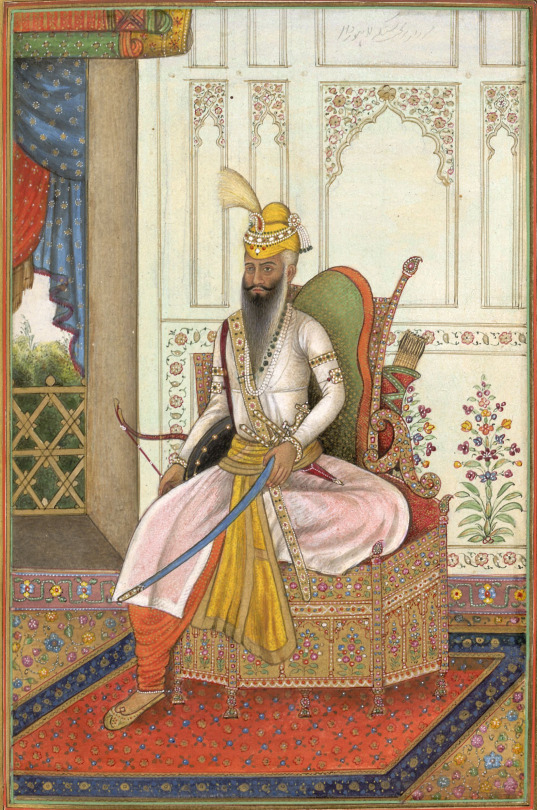

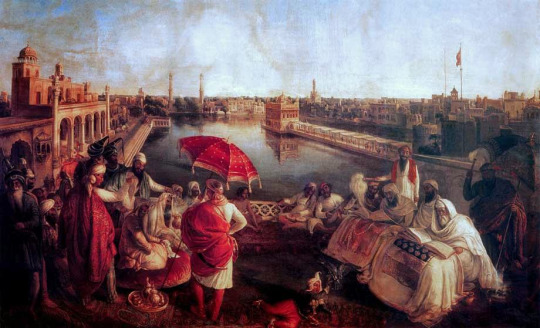
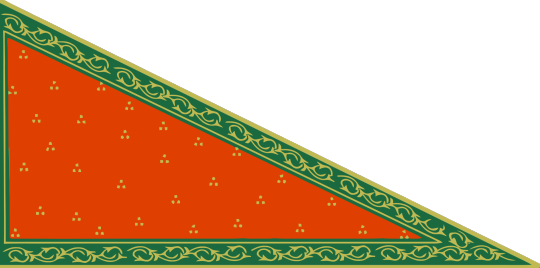


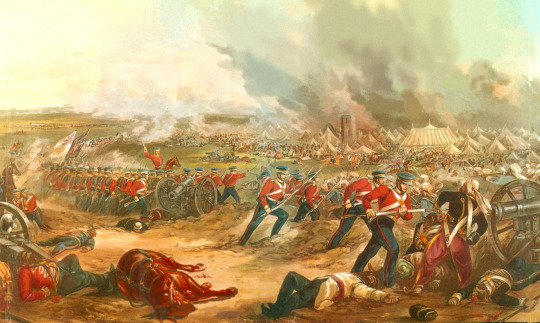
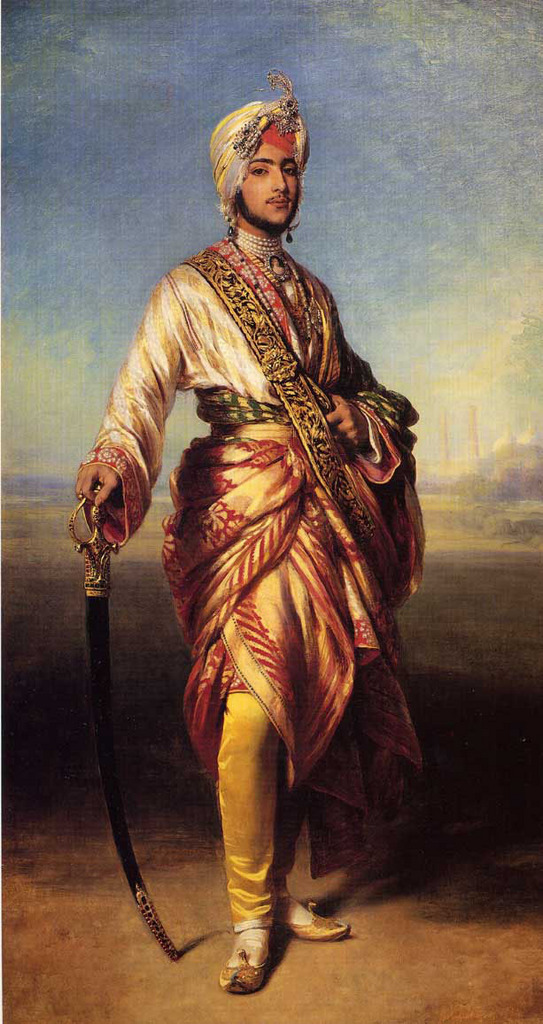
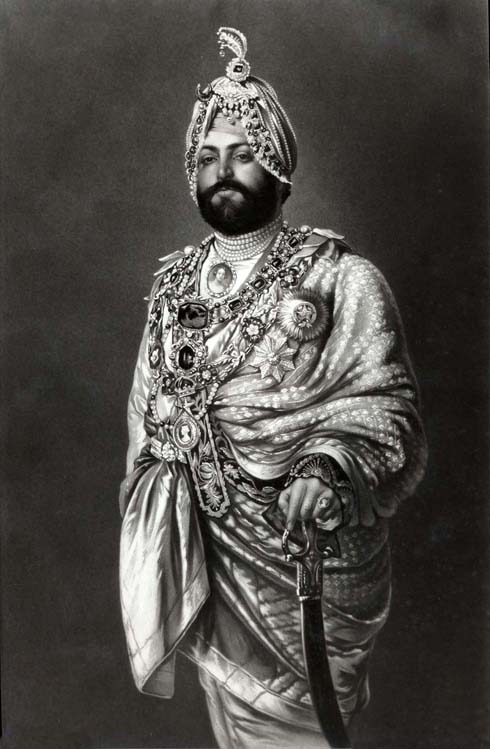


#military history#history#sikh#sikhism#india#british east india company#british imperialism#british empire#19th century#victorian era#ranjit singh#punjab#pakistan#18th century#mughal empire#maratha empire#queen victoria#british india
3 notes
·
View notes
Text
TARABAI // MAHARANI
“She was the regent of the Maratha Empire from 1700 until 1708. She was the queen of Rajaram I, and daughter-in-law of the empire's founder Shivaji I. She is acclaimed for her role in keeping alive the resistance against Mughal occupation of Maratha territories after the death of her husband, and acting as the regent during the minority of her son, Shivaji II.”


0 notes
Text
Maratha Military Landscapes of India: UNESCO World Heritage Nomination 2024-25
Maratha Military Landscapes of India: UNESCO World Heritage Nomination 2024-25 #UNESCO #WorldHeritage #MarathaMilitary #India #Forts #CulturalHeritage #HistoricalSites #ShivajiMaharaj #HeritageConservation #SahyadriMountains #KonkanCoast #DeccanPlateau
India’s nomination for recognition as a UNESCO World Heritage Site for the year 2024-25 is the “Maratha Military Landscapes of India”. This extraordinary network of forts, developed between the 17th and 19th centuries, represents an extraordinary fortification and military system envisioned by the Maratha rulers. The twelve component parts of this nomination include:
I. Salher Fort :Salher Fort,…

View On WordPress
#Cultural Heritage#Deccan Plateau#Eastern Ghats#Forts#Heritage Conservation#Heritage Preservation#Historical sites#India#Konkan Coast#Maratha Empire#Maratha Military Landscapes#Sahyadri Mountains#Shivaji Maharaj#UNESCO World Heritage
0 notes
Text
Biography of Nana Saheb Peshwa II - Indian Peshwa of the Maratha Empire
Biography of Nana Saheb Peshwa II – Indian Peshwa of the Maratha Empire
The first war of independence against the British in Indian history was led by Maratha warrior Nana Saheb Peshwa II. In the aftermath of the death of Chhatrapati Shivaji in 1849, Nana Saheb Peshwa II was one of the most powerful rulers of the Maratha Empire. To liberate India from British colonial rule, ten to fifteen thousand soldiers under the leadership of Nana Saheb took part in the war…

View On WordPress
1 note
·
View note
Text
Adventures in Historyland is doing a Google Meet lecture + Q&A on Saturday, September 16 through Brandon F.'s brand new thingie, The Native Oak Symposium!
I know absolutely jack-shit about the Second Anglo-Maratha War and that's weird given what a huge frickin' deal India is in the history of the British Empire in the 1800s! I would also desperately like to see Blorbo from My Youtube Shows succeed in making this a recurring series with a variety of guest lecturers, so he gets this shameless plug from me!
5 notes
·
View notes
Text
Chhatrapati Shivaji Maharaj- A Great Visionary King of 17th Century
Chhatrapati Shivaji Maharaj, often referred to as Shivaji, was a renowned warrior and the founder of the Maratha Empire in Western India during the 17th century. He is celebrated for his exceptional military tactics, administrative skills, and visionary leadership.
Let us delve into the life of Chhatrapati Shivaji Maharaj, highlighting his accomplishments, his significant contributions, and the lasting impact he made on Indian history. Read more...
2 notes
·
View notes
Text
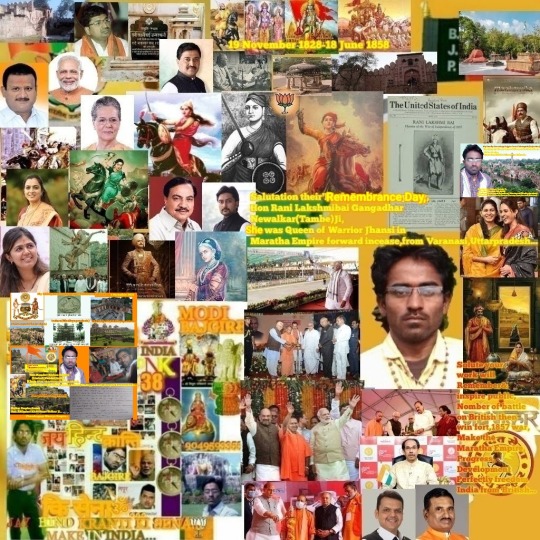
#🇮🇳Solutation their'Remembrance Day#Hon Rani Lakshmibai Gangadhar Newalkar(Tambe)Ji#She was Queen of Warrior Jhansi in#Maratha Empire forward increase from Varanasi#Uttarpradesh#Solute your#Work will Remember&inspire public#Nomber of battle On British then Win fort 1857 war#Make the Maratha Empire#Progress#Development Perfectly freedom india from British...-Namdev Kishan Bajgire
3 notes
·
View notes
Text
#Riteish Deshmukh#Raja Shivaji#Chatrapati Shivaji Maharaj#Maratha empire founder#Maharashtra’s greatest warrior#historical action drama#Jio Studios#Mumbai Film Company#Genelia Deshmukh#Jyoti Deshpande#Santosh Sivan#Ajay and Atul#Akshay Kumar#Mahesh Manjrekar#Sandeep Singh#Bollywood#Indian cinema#historical films#period drama#Indian history.
0 notes
Text

sinhagad fort - maharashtra, india
#mine#stairs#ruins#magical#cottagecore#maharashtra#india#indian architecture#fort#pune#hill fort#maratha#maratha empire
1 note
·
View note
Text

To Buy now
visit our website: www.novelemporium.com
Call: 88670 29800
Email: [email protected]
#Sikh Empire Coins#Tripura Coins#Indian Kingdom Coins#Rohilkhand Coins#Bengal Nawabs Coins#Mysore Coins#Maratha Confedaracy Coins#Manipur Coins#Madhurai Kingdom Coins#Lahore Mint Coins#Chhatrapati Shivaji Coins#Chatrapati Sivaji Coins#Nara Narayana Coins#Krishnaraja Wadeyar Coins#Chamaraja Wadeyar Coins#Tanjavur Nayakas Coins#Haider Ali Coins#Tipu Sultan Coins#Shah Alam Coins#Maratha Confedaracy Silver Coins#Maratha Copper Coins#Copper Kasu Coins#Taimur Shah Coins
0 notes
Text

Malhar Rao Holkar The Maratha Subedar who shaped 18th century India
Malhar Rao Holkar was a prominent Maratha subedar who played a crucial role in shaping the political and military landscape of 18th century India. He was born in 1694 in the village of Hol, near Indore in present-day Madhya Pradesh.
0 notes
Text
How Marathas defeated Mughals. Read History of Marathas in Hindi.
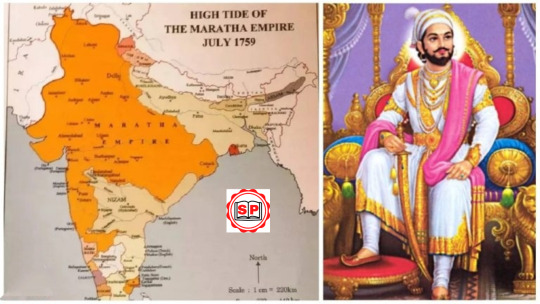
The Marathas defeated the Mughals by a combination of military tactics, political alliances, and an effective guerrilla warfare strategy. The Marathas used a strategy of small, mobile forces to launch surprise attacks on Mughal supply lines and communications networks. They also made alliances with other regional powers such as the Rajputs and the Jats to strengthen their forces. The Marathas also employed a scorched-earth policy of destroying Mughal crops and villages to weaken their hold on the region. Ultimately, their strategy of using superior military tactics combined with political alliances and guerrilla warfare led to the decline of Mughal power in India and the eventual establishment of the Maratha Empire.
Translated in Hindi 👇
मराठों ने मुगलों को कैसे हराया।
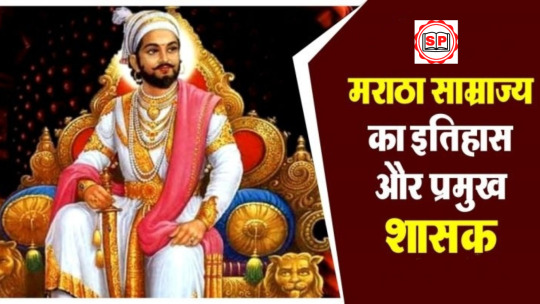
मराठों ने सैन्य रणनीति, राजनीतिक गठजोड़ और एक प्रभावी गुरिल्ला युद्ध रणनीति के संयोजन से मुगलों को हराया। मराठों ने मुगल आपूर्ति लाइनों और संचार नेटवर्क पर आश्चर्यजनक हमले शुरू करने के लिए छोटी, मोबाइल सेना की रणनीति का इस्तेमाल किया। उन्होंने अपनी सेना को मजबूत करने के लिए राजपूतों और जाटों जैसी अन्य क्षेत्रीय शक्तियों के साथ भी गठबंधन किया। मराठों ने इस क्षेत्र पर अपनी पकड़ कमजोर करने के लिए मुगल फसलों और गांवों को नष्ट करने की झुलसी-मिट्टी की नीति भी अपनाई। अंततः, राजनीतिक गठजोड़ और गुरिल्ला युद्ध के साथ संयुक्त रूप से बेहतर सैन्य रणनीति का उपयोग करने की उनकी रणनीति के कारण भारत में मुगल शक्ति का पतन हुआ और अंततः मराठा साम्राज्य की स्थापना हुई।
1 note
·
View note